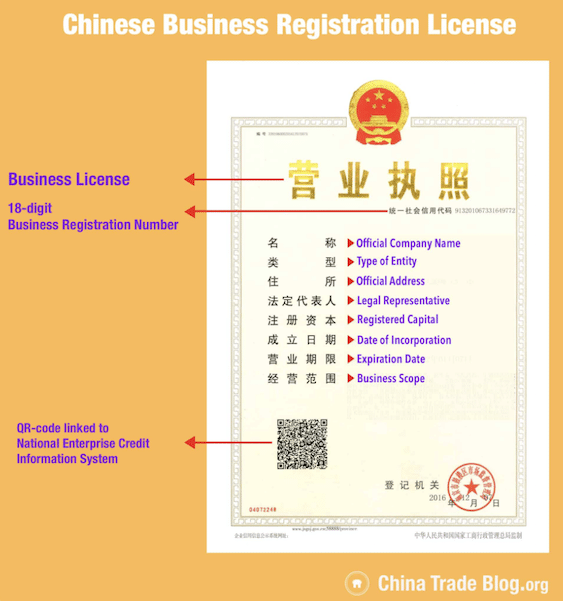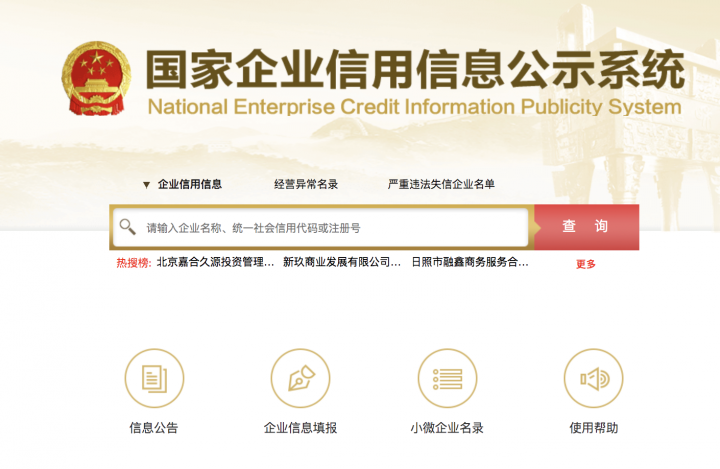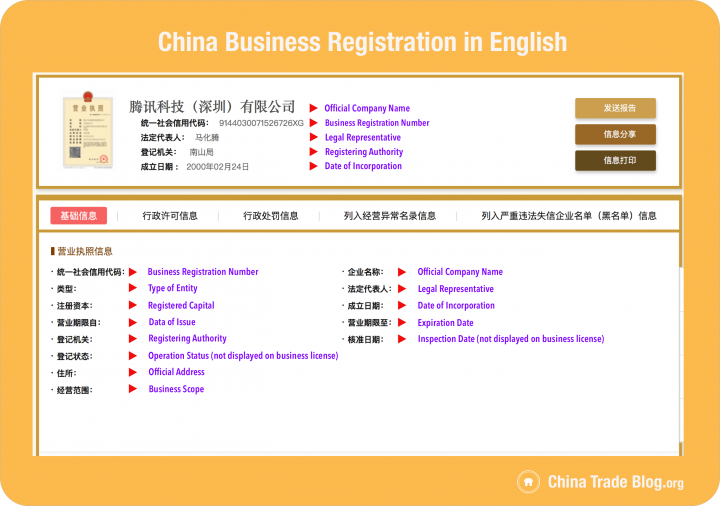With China being the world’s biggest exporter of goods since 2009 and the largest trading nation in the world, it’s not a surprise that more businesses are choosing to get their products manufactured there.
China also has a reputation for scams regarding suppliers and manufacturing. If you’re planning on doing any business there it’s important to verify whoever you want to work with before committing to anything.
So, how do you make sure you’re doing business with a legitimate manufacturer from China?
Working with manufacturers in China, we’ve come up with a series of five steps that will help verify Chinese manufacturers and allow you to protect your business.
- Find the manufacturer’s business licence and registration number
- Identify their quality control system certificate
- Check their import/export licence
- Check the reputation of the manufacturer
- Audit the manufacturer
One of the first steps in verifying a Chinese manufacturer is to make sure you’re actually working with a manufacturer and not a trading company. A common scam in China is trading companies pretending to be manufacturers in an attempt to attract customers. Trading companies don’t actually make products, they’re a middleman that source products from factories then increase the price of the products and resell them and often specialise in a particular industry. When working with an actual factory or manufacturer, you can have control over or negotiate prices, lead times and make changes to the products being created. Trading companies usually have fixed prices that are much higher and no control over the production and quality of the products.
Step 1: Find the manufacturer’s business licence and registration number
All legitimate Chinese businesses have to register with the Chinese government to receive a business registration number. Businesses are given a 18 digit number (the registration number), also called a Unified Social Credit Code (统一社会信用代码 | tǒng yī shè huì xìn yòng dài mǎ).
Here is an example registration number on a business licence next to the Unified Social Credit Code.

Each number in the registration number means something important, here is what they mean:
- First digit: shows the code of the registering authority and is usually the number 9
- Second digit: shows the type of entity being registered; ‘1’ means the business is an enterprise, ‘2’ means it’s an individually-owned business and ‘3’ represents professional farmers cooperatives
- Third-Eight digits: represent the administration division code for the registering authority and show where the company is registered (their location)
- Ninth-Seventeenth digits: show the organisation code
- Last digit: shows the check digit, which can be either a number or a letter, which allows the authorities to check the registration number quickly.
Verifying a business licence
The look and design of Chinese business licences does vary from province to province and has gone through some changes in the last couple of years. However, the majority of business licences have the same important information:
- Registration number
- Chinese (official) company name
- The type of company
- The registered address
- The company’s legal representative
- The date of establishment
- Expiry date of the business licence
- The date the business licence was established
- Business scope
- Registered capital
When you’re first thinking about working with a Chinese manufacturer, send them an email asking for a copy of their business licence. The easiest way to check if the document is legitimate is by looking at the national database that China uses to record all official registration records, the National Enterprise Credit Information Publicity System (NECIPS).

On the homepage, there’s a big search bar where you can enter the 18 digit registration number, as you can see on the example below.

Before the website completes the search, it will ask you to solve a puzzle, like Captcha. These puzzles are in Chinese, so you will need help to understand and complete them. Once you finish the puzzle you will see this page.

You can then see the results for your search and can compare that information to the business licence the manufacturer gave you.

Common scams on business licences:
- Using a name that isn’t registered in China
- Change the issuing date on the licence to make it seem they’ve been in business for longer
- Increase the amount of capital they have registered to appear financially stronger
- Change the expiry date to hide the fact the licence isn’t valid anymore
It’s a major red flag if they cannot give this to you, as it is one of the most common verification techniques businesses use.
Locate their AIC website for the region
The Administration for Industry and Commerce (AIC) is a national Chinese organisation with local departments for each region in China. It’s another way to see official records from Chinese manufacturers so you can verify them. It’s a good idea to search for a manufacturer’s business license through the AIC to make sure the manufacturer has given you their proper business.
This is the link to the national search website: http://www.gsxt.gov.cn/
Here are the AIC websites for the major manufacturing hubs in China:
- Beijing (北京): http://bj.gsxt.gov.cn/
- Shanghai (上海): http://sh.gsxt.gov.cn/
- Guangdong (广东): http://gd.gsxt.gov.cn/
- Shendong (山东): http://www.sdxy.gov.cn/
- Ningbo (宁波市市场监督管理局): http://www.nbaic.gov.cn/
You can find the links to other cities and provinces here: https://www.chinacheckup.com/blogs/articles/chinese-aic-websites-list
Step 2: Identify their quality control system certificate
According to ASQ, a Quality Management System (QMS) is a “system that documents processes, procedures, and responsibilities for achieving quality policies and objectives. A QMS helps coordinate and direct an organisation’s activities to meet customer and regulatory requirements and improve its effectiveness and efficiency on a continuous basis.” The most common type of QMS certification is an ISO 9001 with over 170 countries and one million companies using it as their QMS certification.
If you’re wanting to work with a Chinese manufacturer ask for their ISO 9001 certification to verify it. Things to look out for are:
- The manufacturer’s product scope: Their certification is only valid for products or product categories listed on it. Manufacturer’s sometimes add a number of different products or product categories to their certification, when they don’t actually have a QMS in place for them and it hasn’t been officially registered.
- The issuing date and expiry date: Manufacturer’s could be using an outdated QMS certification, meaning that at some point they did have one, but failed other more recent inspections.
Another thing you can do is contact the issuer of the ISO 9001 certification. The Standardisation Administration of the People’s Republic of China (SAC) oversees the whole field of certification in China and the Certification and Accreditation Administration of the People’s Republic of China (CNCA) works alongside them. Look at the certificate to see if you can see any logos or certification marks that can help you identify the issuer. A quick Google search should then take you to their website and you can do a search there. The only problem with this is that the website might only be in Chinese and you might need a translator to help.
Step 3: Check their import/export licence
In order for Chinese manufacturers to be involved in importing and exporting goods, they need to have two important documents, a China Customs Registration Certificate (中华人民共和国海关报关单位注册登记证书 | zhōng huá rén mín gòng hé guó hǎi guān bào guān dān wèi zhù cè dēng jì zhèng shū) that is issued by Chinese customs and a Foreign Trade Operator Record (对外贸易经营者备案登记表 | duì wài mào yì jīng yíng zhě bèi àn dēng jì biǎo) issued by the Ministry of Commerce. If manufacturers have these two certificates they can then apply an import/export permit for the goods they are selling. Ask the manufacturer you plan to work with copies of all these certificates and use the official government database to verify the details. The most common scam with import/export licences is manufacturers claiming to make more products than they actually do.
Step 4: Check the reputation of the manufacturer
One of the easiest ways to verify a Chinese manufacturer is by asking people in your industry who have also worked with them. They can give you feedback based on their personal experiences and a legitimate insight into the manufacturer.
Step 5: Audit the manufacturer
Another easy way to verify Chinese manufacturers is by having a professional third-party perform an audit on them.
These audits can cover the following:
- If they have a QMS certificate
- Verification of licences
- Overview of HR policies, workers situation, working conditions
- A profile of the factory; their official name, contact details, production capability and capacity
- Their business experiences; available samples, reviews from previous clients and trade history
Now that you have verified your Chinese supplier, it’s time to start doing business with them. A great way to start is by requesting samples of your product from them and by drafting a vendor guide to set out your expectations.
Verifying manufacturers in China can be a huge hurdle to overcome. If you find yourself needing more help with the process, reach out to us. Having processed millions of dollars worth of transactions for our customers, we have the no how to help you protect your company and get your products made.



